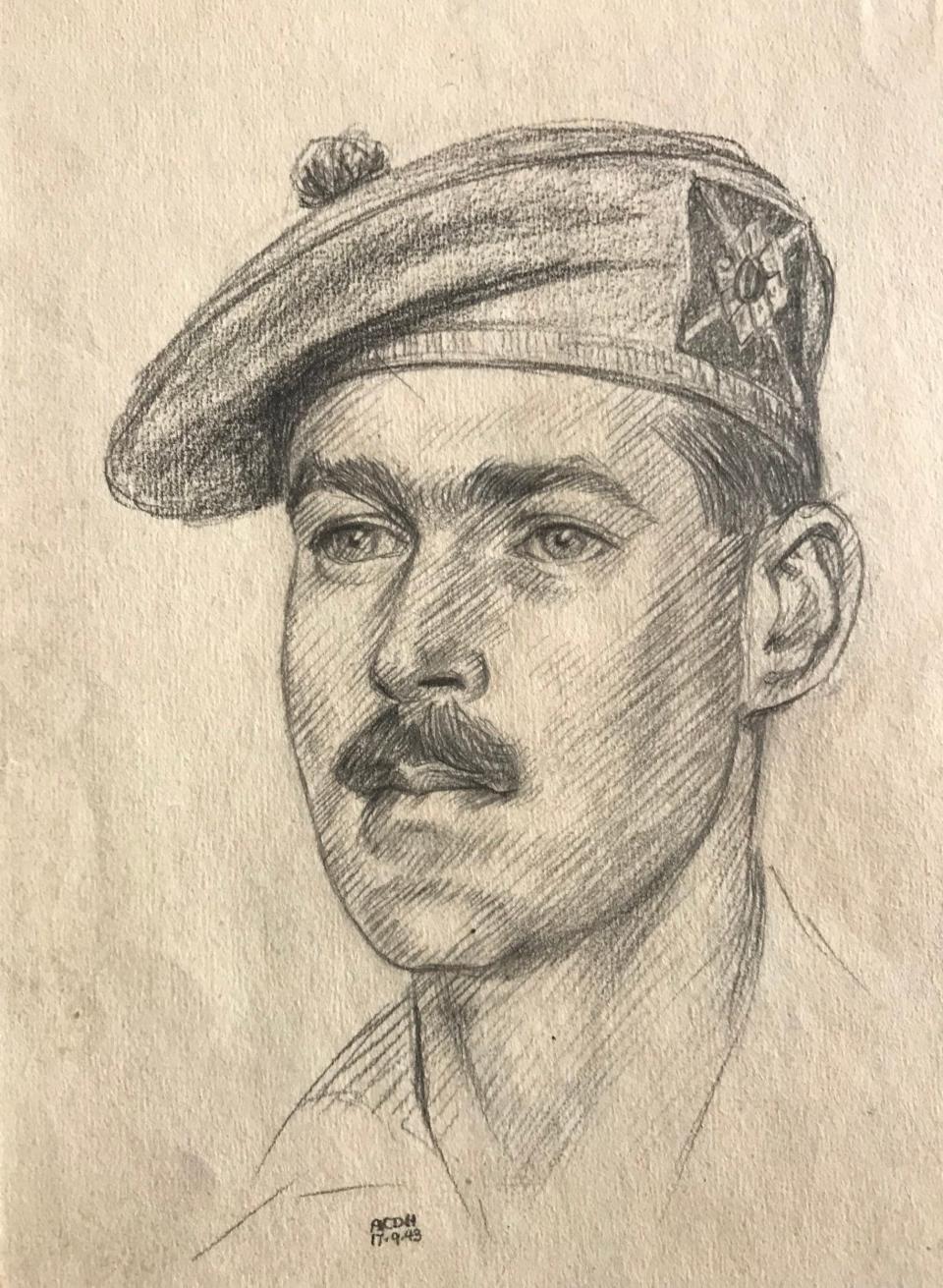Major John Errington, signals officer who avoided a Nazi massacre in northern France but spent five years in a prisoner-of-war camp – obituary

Major John Errington, who has died aged 104, was a pre-war Regular Army officer serving with the Royal Scots (the Royal Regiment) who narrowly evaded a massacre in 1940 during the withdrawal to Dunkirk and survived five years as a prisoner of war.
In September 1939, Errington went to France with 1st Battalion the Royal Scots (1RS) as part of the British Expeditionary Force. Appointed regimental signals officer, he was issued with a motorcycle.
The German advance forced them to withdraw from forward positions at Wavre on the River Dyle in Belgium, and by May 21 they were deployed on the River Escaut, south of Tournai.
On the way there they were bombed by the Luftwaffe, but the bombs landed on a nearby travelling circus. Those present never forgot the images of wounded elephants charging through the fields and four white liberty horses dragging the unconscious figure of a girl rider.
On arrival, the battalion was nearly robbed of a well-earned night’s rest. Divisional HQ complained that they were under attack but it turned out that their mess sergeant was out with his rifle killing pigs.

After two days under continuous mortar and shellfire resulting in heavy casualties, they were ordered to pull back to the Merville-Béthune road, west of Lille. There they were ordered to form part of the outer defensive perimeter to cover the evacuation from Dunkirk. Fifth columnists, many of them in British uniforms, were active. The CO found the muzzle of a revolver in the pit of his stomach when an excited young staff officer demanded to see his identity card.
With orders to fight to the last man and the last round, 1RS and 2nd Battalion the Royal Norfolk Regiment put up a desperate defence near the village of Le Paradis. Errington was at Battalion HQ in a farmhouse, but when it was set on fire he moved to a building across the road from where his small group beat off a series of German attacks.
Positioning himself at an upstairs window, he knocked out a number of enemy light armoured vehicles with a Boys anti-tank rifle.
On the night of May 27, under cover of darkness the survivors, led by Major Bruce, the adjutant and acting CO, made their way to a nearby barn and hid there. Two days later, a local inhabitant knocked on the door and asked for a cigarette and they learnt that they were surrounded by German troops. Errington was among those captured and taken prisoner.

Some soldiers of the 2nd Battalion the Royal Norfolk Regiment were defending a farmhouse against attacks by Waffen-SS units in Le Paradis. They had become separated from their regiment, and when they ran out of ammunition they surrendered. Almost 100 of them, many of them wounded, were lined up against a wall by a unit of the SS Division Totenkopf and killed by machine-gun fire. Details of this war crime only emerged towards the end of the war but these were never fully investigated.
After being made prisoner, Errington took part in a long march eastwards to Germany. During the five years that he spent as a PoW at Oflag V-B, in the south-west of the country, he kept himself busy by learning Arabic. He performed in pantomimes, started a carpentry group and, having learnt to sail as a boy, studied sailing manuals to further his knowledge. His sister, who lived on the Isle of Mull, sent him food parcels and cigars; the latter he used as currency.
Charles John Richard Errington was born on August 12 1918 at Beeslack, his family home, near Penicuik, Midlothian, Scotland. His father and maternal grandfather had both served with the Royal Scots. Always known as John, Errington was educated at Wellington College before joining the RAF and going to Cranwell. After qualifying as a pilot, he transferred to Sandhurst and was commissioned in 1938.

He rejoined his regiment after the war and was posted to the Middle East Centre for Arab Studies (MECAS) in Jerusalem. On July 22 1946 he would normally have lunched at the King David Hotel but his Arabic tutor kept him later than usual into his lunch hour. Shortly after midday, the hotel was almost destroyed by a bomb planted by Irgun, the Zionist insurgent group. Ninety-one people died and many more were wounded. Errington always believed that his tutor knew what was about to happen and deliberately kept him back.
He was posted to the Combined Intelligence Centre at RAF Habbaniya, Iraq, where he met his future wife, Brenda Reeves, who was working at the British Embassy in Baghdad.
Attendance at Staff College in 1950 was followed by a posting to Military Intelligence in the War Office. He served in Malaya from 1953 to 1956 during the Emergency and was Mentioned in Despatches “for distinguished service”. After a final posting, to Libya, he bought a car and drove back to England, passing through France and visiting Le Paradis en route. In March 1959, he retired from the Army.
Errington went to agricultural college in Aberdeen and then managed the family farm in Kincardineshire. He became a keen dinghy and offshore sailor and sailed his yacht, Prince Vreckan, well into his nineties. He also enjoyed swimming and, aged over 100, still swam in the public baths in Kirkcudbright.
John Errington married Brenda Reeves in 1948. She and a daughter predeceased him, and he is survived by their two other daughters.
Major John Errington, born August 12 1918, died August 29 2022

 Yahoo News
Yahoo News 
